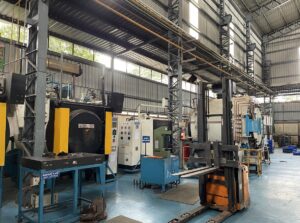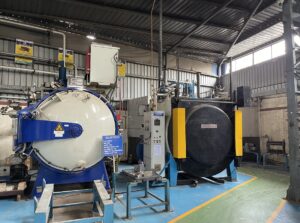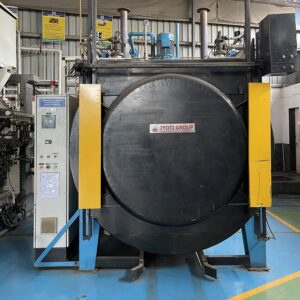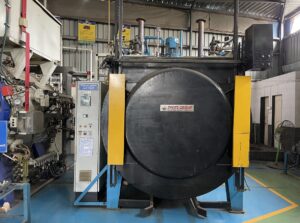A tempering furnace is a key piece of equipment used in the heat treatment process to alter the mechanical properties of metals, especially steel. This process typically follows quenching, which hardens the metal but leaves it brittle. Tempering reduces this brittleness while retaining the desired hardness.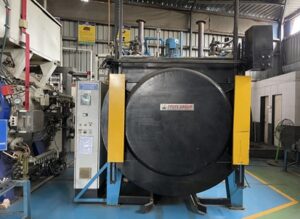
Key Features of Tempering Furnace Heat Treatment:
- Purpose:
- Enhance toughness.
- Relieve internal stresses created during quenching.
- Adjust the metal’s hardness and ductility to meet specific requirements.
- Process Overview:
- The metal, typically steel, is first quenched to form a hard but brittle martensitic structure.
- It is then heated in the tempering furnace to a specific temperature (depending on the desired properties).
- The material is held at this temperature for a fixed period (soaking time).
- Finally, it is cooled, usually in still air.
- Temperature Range:
- Low-temperature tempering (150°C–300°C): Retains high hardness, used for tools.
- Medium-temperature tempering (300°C–500°C): Balances hardness and toughness, used for structural parts.
- High-temperature tempering (500°C–700°C): Maximizes toughness, often used for springs or machine components.
- Types of Tempering Furnaces:
- Box furnace: Ideal for batch tempering.
- Continuous furnace: Used for high-volume production.
- Vacuum furnace: For oxidation-free tempering.
- Salt bath furnace: Ensures uniform heating.
- Applications:
- Automotive parts (gears, axles, crankshafts).
- Tool manufacturing (drills, cutting tools).
- Aerospace components.
- Springs and high-stress structural elements.
- Critical Parameters:
- Temperature control: Uniformity ensures consistent material properties.
- Heating rate: Prevents thermal shock.
- Cooling method: Tailored to avoid reintroduction of internal stresses.
Feel free to contact us if you would you like to know more details.



